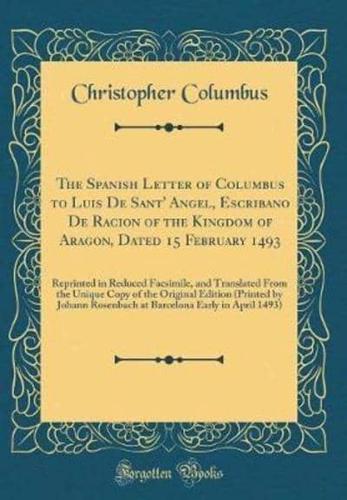Publisher's Synopsis
Excerpt from The Spanish Letter of Columbus to Luis De Sant' Angel, Escribano De Racion of the Kingdom of Aragon, Dated 15 February 1493: Reprinted in Reduced Facsimile, and Translated From the Unique Copy of the Original Edition (Printed by Johann Rosenbach at Barcelona Early in April 1493)
In the first half of the fourteenth century, the world was made acquainted, by Marco Polo, with lands beyond the ken of Ptolemy, and men who studied geography learned that an ocean bounded Asia on the East, as an ocean bounded Europe the West. With this knowledge, a spirit of exploration was evoked which became incarnate, soon after the beginning of the fifteenth century, in Prince Henry of Portugal. The efforts of the Portuguese in that century, to reach and turn the southern limit of Africa, so as to wlil by sea a passage to the golden shores of India - lost since the time of Alexander the Great, save in the glimpses afforded by Arab merchants and by Marco Polo stimulated so keenly the desire for geographical discovery, that its fascination has not yet become inoperative. Under the influence of that spirit, a Genoese mariner whom we call Christopher Columbus, set his heart upon traversing the ocean which he imagined lay between Europe and Cathay, order to find a Western passage to India, as the Portuguese were seeking the Eastern. His hopes were not realised, for he found what he had not sought; but his efforts were crowned with the achievement so enthusiastically lauded in the first sentence of this preface, when he discovered the West Indies on Thursday, October r1th, 1492. About the Publisher Forgotten Books publishes hundreds of thousands of rare and classic books. Find more at www.forgottenbooks.com This book is a reproduction of an important historical work. Forgotten Books uses state-of-the-art technology to digitally reconstruct the work, preserving the original format whilst repairing imperfections present in the aged copy. In rare cases, an imperfection in the original, such as a blemish or missing page, may be replicated in our edition. We do, however, repair the vast majority of imperfections successfully; any imperfections that remain are intentionally left to preserve the state of such historical works.






















